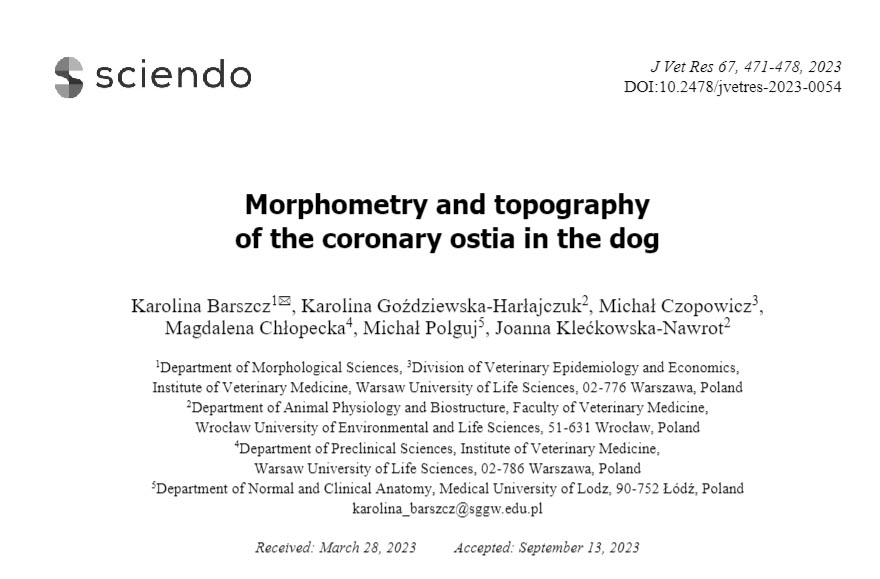Publikacja: Morphometry and topography of the coronary ostia in the dog
Karolina Barszcz, Karolina Goździewska-Harłajczuk, Michał Czopowicz,Magdalena Chłopecka, Michał Polguj, Joanna Klećkowska-Nawrot
DOI: https://doi.org/10.2478/jvetres-2023-0054
Abstract
Introduction: The purpose of this study was to perform a morphometric examination of the coronary ostia, including theirlocation in the area of the aortic sinuses, and to describe variations in ostia structure in the domestic dog. Material and Methods:The study was conducted on the hearts of 91 pedigree dogs of both sexes, aged 1 to 18 years (median 9 years), with a body weightfrom 1.2 to 65 kg (median 20.7 kg). Morphometric examinations of the coronary ostia were performed in the studied individuals,and the location of the structures in relation to the intercommissural lines was determined. Results: Three types of location of thecoronary ostia were distinguished, i.e. below the intercommissural line (type I), on the intercommissural line (type II), and abovethe intercommissural line (type III). In the studied dogs, the most common location of the ostia was type I – found in the leftcoronary artery of 74/91 dogs (81%) and in the right coronary artery of 42/91 dogs (46%). Morphological variations were shownin 36/91 dogs (40%) in the structure of the coronary ostia, including the presence of accessory ostia. The most common variationwas the presence of an accessory ostium near the ostium of the right coronary artery, which was found in 28/91 dogs (31%).Conclusion: The results may be useful in developing standards for procedures to replace the whole or part of the aortic valve andrepair the coronary artery.
Keywords: coronary ostia, coronary arteries, dog.
